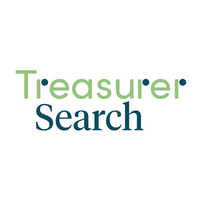This culture emphasizes the necessity of understanding and managing cash inflows and outflows across all levels of a business, fostering a collective responsibility for cash management among employees. Establishing such a culture is critical for ensuring financial stability and sustainability, particularly in an era where economic fluctuations can significantly impact liquidity positions.
The significance of cash flow in business cannot be overstated; it is essential for day-to-day operations and long-term planning. Effective cash flow management enables organizations to make informed decisions regarding investments, employee compensation, and pricing strategies, ultimately affecting their overall financial health. Companies that embrace a cashflow-first mindset can improve their ability to meet obligations, mitigate risks associated with poor cash management, and position themselves for growth without relying heavily on external financing.
Implementing a cashflow-first culture involves several key steps, including leadership alignment, employee education, and the establishment of metrics for accountability. CEOs and financial leaders must communicate the importance of cash flow to inspire commitment throughout the organization. Additionally, providing training and resources to enhance cash flow literacy among employees empowers them to contribute positively to cash management practices. This shift requires time and dedication, often taking 3 to 5 years to fully realize.
While the benefits of a cashflow-first culture are substantial, the transition may encounter challenges such as resistance to change and a historical focus on profitability over liquidity. Organizations must address these hurdles through strategic planning, continuous improvement, and the establishment of a Cash Leadership Office (CLO) to centralize efforts and align cash management initiatives with broader business goals. Successfully handling these complexities can provide a competitive advantage and enhance an organization’s long-term viability.
Steps to Build a Cashflow-First Culture
1. CEO and Leadership Alignment
The foundation of a cashflow-first culture begins with alignment among the CEO and finance leadership. It is imperative for the leadership team to set clear goals and expectations regarding cash management practices throughout the organization. A unified front from the leadership inspires commitment to the cash culture initiative.
2. Employee Education and Engagement
Developing cash flow literacy among employees is key to fostering this culture. Organizations should educate employees on the principles of cash flow management and provide them with the necessary tools to monitor their impact on cash flow. Regular training sessions and routine meetings can reinforce the importance of cash flow and engage employees in the culture-building process
3. Metrics and Accountability
Implementing meaningful metrics and KPIs is essential for tracking progress in cash flow initiatives. Organizations should establish common charters for initiatives and create benefit measurement milestones to ensure accountability. Regular reporting on these metrics can drive results and keep the team focused on cash management goals
4. Incentive Structures
To further align interests, companies may consider revising compensation structures to reward behaviors that enhance cash flow. For instance, sales commissions could be tied to cash collected rather than contracts signed, incentivizing teams to prioritize cash inflows
5. Challenges and Transformation Timeline
Transforming an organization into a cashflow-first culture is not an overnight process; it requires sustained effort and commitment, typically over 3 to 5 years. Companies should anticipate challenges, including potential resistance to change, and be prepared to support their teams through training and change management initiatives. Establishing a cash leadership office (CLO) can help drive these efforts, ensuring alignment and commitment across the organization as they pursue a cash-first approach.
Read also: Interview | 5 Questions for Jessica Oku, the treasuryXL Expert
6. Benefits of a Cashflow-First Approach
Adopting a cashflow-first culture offers numerous benefits that can enhance the financial health and operational efficiency of an organization. Through prioritizing cash flow management, businesses can gain better visibility into their financial movements, ensuring they have the necessary resources to meet their obligations and pursue growth opportunities.
7. Improved Financial Stability
A cashflow-first approach emphasizes the importance of understanding cash movements, enabling organizations to maintain a healthy liquidity position. This approach allows companies to effectively manage their operational expenses, thereby reducing the risk of financial strain or failure due to poor cash management practices. Businesses that focus on cash flow are better equipped to sustain their operations without relying excessively on external financing, showcasing their ability to self-fund growth initiatives.
8. Enhanced Decision-Making
Implementing a cashflow-first strategy fosters informed decision-making by providing organizations with clear insights into their financial situation. Through focusing on key areas such as budgeting, inventory management, and receivables collection, companies can identify opportunities for improvement and mitigate potential risks. This informed decision-making process is crucial for capitalizing on growth opportunities as they arise.
9. Operational Efficiency.
A cashflow-first culture encourages businesses to streamline their operations, leading to greater efficiency. Effective management of working capital, such as optimizing inventory levels and accelerating accounts receivable collections, can significantly improve cash flow. Through enhancing operational efficiency, organizations can reduce holding costs and free up cash that may otherwise be tied up in excess inventory or delayed collections.
10. Sustainability and Growth Potential
Emphasizing cash flow management also helps organizations demonstrate sustainability to stakeholders, as it showcases their ability to sustain operations and invest in future growth without relying heavily on external financing. A positive operating cash flow (OCF) not only indicates financial stability but also signals potential for expansion and investment in new initiatives.
11. Overall Competitive Advantage
Ultimately, adopting a cashflow-first culture can provide a competitive edge in the market. Organizations that prioritize cash flow management are better positioned to navigate economic fluctuations, meet customer demands promptly, and invest strategically in opportunities that drive growth.
Through fostering a strong cash management framework, businesses can enhance their overall financial health and ensure long-term viability in an increasingly competitive space.












